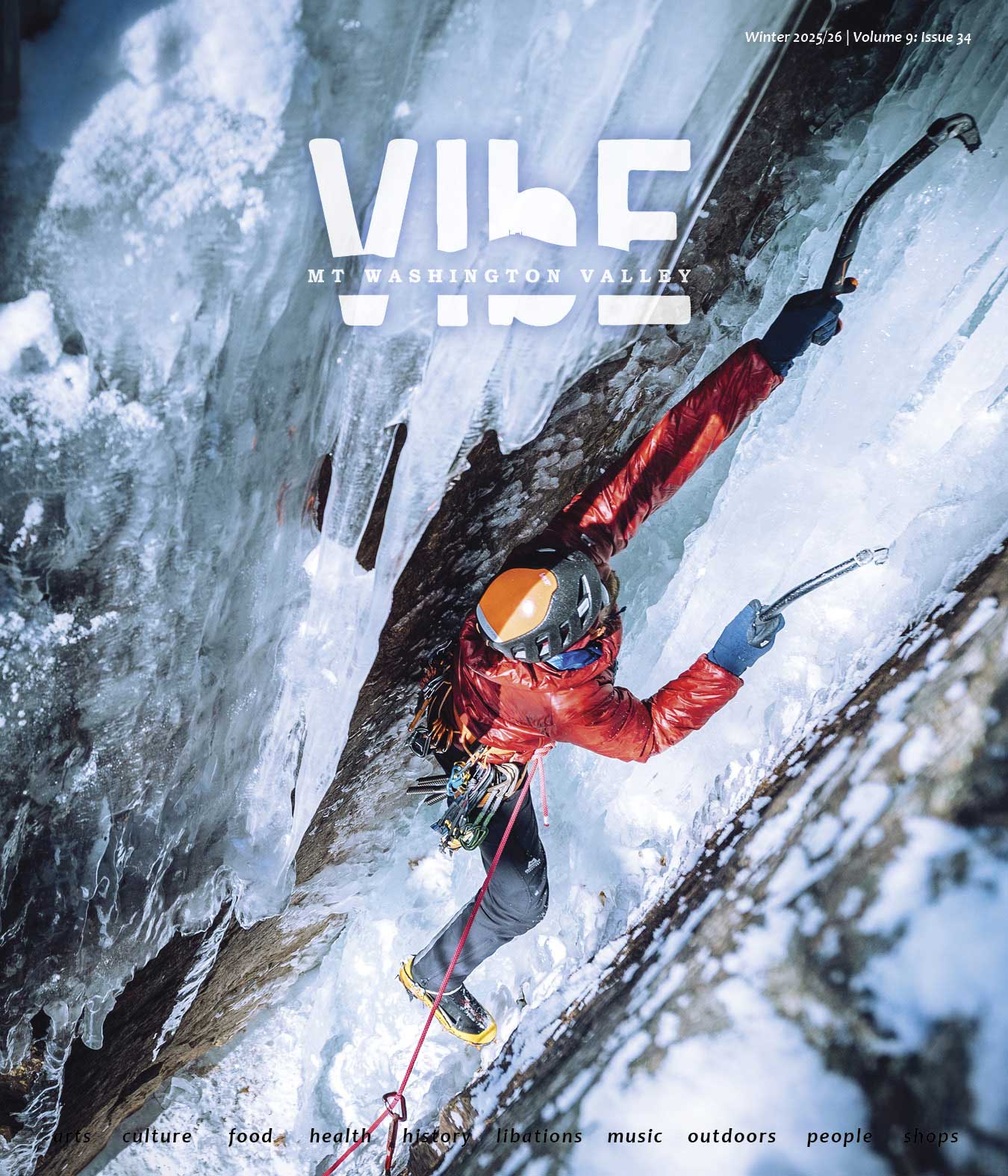Perhaps the timeless winter activity that is sledding will make a comeback.
Sledding for me meant my grandfather would wander over from next door in that khaki work ensemble he wore every day. He would open our front door, plaid wool barn coat halfway zipped, horn-rimmed glasses perched on his chilled nose—then call into my house with a hustle in his voice, “Bundle up!”
G rowing up on a farm in rural Rhode Island didn’t offer me much in the way of learning to ski, but I did live in the northwest corner of the state famous for slightly colder temps, which equated to lots of snowy days and school cancellations. Our corner of the world was often referred to as “the sticks.” Naturally, my pals and I played in the woods, ran around in fields, sloshed through brooks, and climbed the biggest rocks we could find. The lack of mountains never crossed our minds—we had hills for miles. In the winter, we were serious about sledding. Waking up to fresh snow would mean sitting by the TV munching a bowl of cereal while blasting the morning news in anticipation. There was no getting dressed for school until the weather segment came on, fingers and toes crossed to hear that famous line declaring, “No school, Foster-Glocester.” This was all we had going for us in our quiet corner of the state, and we played it up. My friends and I were often the envy of all those sun-kissed beach kids headed to school along the coast.
Snow did not last on the ground for long down there, so we had to get our sled runs in while it was fresh. Sledding for me meant my grandfather would wander over from next door in that khaki work ensemble he wore every day. He would open our front door, plaid wool barn coat halfway zipped, horn-rimmed glasses perched on his chilled nose—then call into my house with a hustle in his voice, “Bundle up!” The man was all business most of the time, especially for the important occasions: strawberry season, blueberry season, hay season, and a good snowfall.
On rare days like this, Gramp would dust off and drag out the old family toboggan from the tractor barn. Long enough to hold myself and three of my cousins, the toboggan was a masterpiece of wood and rope.
Actually, it was hard to tell whether he got more joy from work or from play, because he seemed to derive equal amounts of enthusiasm from both. As proof, he would certainly make serious business out of rallying us kids together for some good sledding. Snow pants were slipped on over pajama pants—coat, hat, mittens—out the door I would go! I could always tell when there was fun to be had by his subtle and mischievous smile, a spark of adventure in his cool blue eyes.
Lucky for me there was a decent-sized hill in our cow pasture, littered with rocks and a dozen Hereford beef cattle. This slope was reserved for the “powder” days, or anything over six inches—which in Rhode Island, is considered a big storm. On rare days like this, Gramp would dust off and drag out the old family toboggan from the tractor barn. Long enough to hold myself and three of my cousins, the toboggan was a masterpiece of wood and rope. The most desired and thrilling seat was, of course, at the front, where you could tuck your feet up under the wooden arc, or “hood,” for bracing.
Everyone else would pile up behind you and hold on for dear life, legs woven together in some brilliant feat of elementary engineering, desperately hoping a cow would not dare to wander across our path. To prevent this, Gramp would shake out a bale or two of hay at the top of the hill, calling the cows for breakfast in his signature holler, “COME, BOSS!” One curious cow would slowly start to wander up. Another would follow along, as cows tend to do. Eventually the rest would catch on and saunter behind, tromping a hoof-pack into the fresh snow that was guaranteed to become a mess of mud by late afternoon.
A poorly coordinated last-minute lean-in effort to turn the sled quickly would often result in a smear of kids tumbling along the hillside, wet RI snow packed tightly up our coat sleeves.
With the cows at a safe distance, we would spend an ambitious amount of time calculating the first run. In order to achieve the most speed and farthest slide, the path of the luge was critical. Aiming the sled carefully to avoid rocks and small boulders jutting from the hillside, the goal was to figure out which ones were safe to coast over or jump, and which ones would slow us down or stop us. Clearly there was no stopping us. Just because the cows were likely still feasting at the top of the hill, you were never protected from the most feared obstacle of all—the only thing fresher than the snowflakes—the warm cow patty. My cousins and I were well aware of this and managed a safe distance, keeping stock of plops to avoid, but we sometimes forgot to warn an unsuspecting friend who would never forget once blessed with the knowledge.
A simple sled designed without runners, the sturdy toboggan was built for transporting heavy loads of wood, supplies, or people through deep Canadian snow. Gliding fast and straight, the sled is only capable of making long arching turns accomplished by lifting and twisting the curled hood to either side, depending on which direction you wish to drift. Ours being 5 feet in length was no exception, no matter how many times we tried. A poorly coordinated last-minute lean-in effort to turn the sled quickly would often result in a smear of kids tumbling along the hillside, wet RI snow packed tightly up our coat sleeves.
Being born in 1914 and riding a sled the 3 miles to and from school during his childhood, my grandfather was a guy with extreme sledding experience. He had a few tricks up his itchy wool sleeve.
More often there was just enough snow on the ground to take the metal racer out. With the combination of a birch-wood-slat deck and flexible red metal runners—it was made to travel with speed and control. The hinged steering bar at the front allowed for steering with either hands or feet. I preferred feet, so I could throw my hands in the air while coasting downhill. Invented in the 1860s in South Paris, Maine, the maneuverability of this style of sled proved a safer option to the toboggan. In 1910, the “Flexible Flyer” (also known as the “Yankee Clipper” in the 60s) was being sold in department stores, with sales soaring during the 1930s, when cheap, self-propelled entertainment appealed to families during the Great Depression. Being born in 1914 and riding a sled the 3 miles to and from school during his childhood, my grandfather was a guy with extreme sledding experience. He had a few tricks up his itchy wool sleeve.
When there were no other kids around, he would aim the Flyer down the center of the hill with much less attention to detail than us kids, drape his belly across the sled, face first, kick his toes into the snow behind him, and invite me to hop on. This meant I would drape myself across his back—lying prone, as well—double-decker style. Looping my arms under his shoulders and resting my chin on the collar of his barn coat—which smelled of sunshine, hay, and stale manure—I wondered how I let myself get into these situations. His methods were old-fashioned-style terrifying, and as a 6-year-old, I was very concerned about safety. Will it work? Will we survive? What if we keep going and crash in the brook? Gramp had just one answer anytime I questioned the validity of his adventures. “Only one way to find out!” That common-sense spark in his eyes had me trusting in no time. He never said a word about my screaming in his ears each time we flew down that hill.
Perhaps the timeless winter activity that is sledding will make a comeback. If you know of a good spot—grab some friends, rally the family—experience the classic fun and freedom of sledding.
We also had the best driveway for a long sled run, and Gramp shared his seasoned skill with us in order to achieve the longest, fastest ride possible. This was a perfect scenario if we only got a few inches of snowfall, or just after the gravel road was plowed. If you started at the very top between our two houses, and if you could make the sharp right turn in the center of the hill before hitting the garage, it was a straight shot down the second hill to see how far along you could soar before stopping. Naturally, the steady ride down promised a steady walk back up, dragging the heavy radio flyer behind. This always brought a bit of a battle with siblings and friends over who had to be the responsible one. At the end of the day, it didn’t matter. We all had our turns. We were all soaked. We were ready for dry PJs and a classic cup of hot chocolate with a spoonful of Marshmallow Fluff melting on top.
The popularity of sledding as a winter sport in the U.S. declined shortly after skiing became popular in the 1930s. It’s tricky to find a good place to sled around the Valley that isn’t private property or too near a busy road. Today, the COVID-19 pandemic has pushed the economy into one of the deepest recessions since the depression and is forcing ski areas to operate with limited capacity. Perhaps the timeless winter activity that is sledding will make a comeback. If you know of a good spot—grab some friends, rally the family—experience the classic fun and freedom of sledding. Pick up a saucer, a trash can lid, an inflatable tube, or your old metal runner, and make it your business to play outside!







